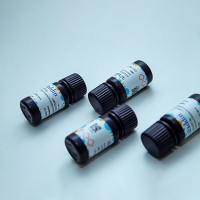Flexible Ligand Docking with Glide
互联网
- Abstract
- Table of Contents
- Figures
- Literature Cited
Abstract
Glide is a ligand docking program for predicting protein?ligand binding modes and ranking ligands via high?throughput virtual screening. Glide utilizes two different scoring functions, SP and XP GlideScore, to rank?order compounds. Three modes of sampling ligand conformational and positional degrees of freedom are available to determine the optimal ligand orientation relative to a rigid protein receptor geometry. This unit presents protocols for flexible ligand docking with Glide, optionally including ligand constraints or ligand molecular similarities.
Keywords: ligand docking; protein?ligand interactions; protein?ligand binding
Table of Contents
- Strategic Planning
- Basic Protocol 1: Grid Generation
- Basic Protocol 2: Flexible Ligand Docking
- Alternate Protocol 1: Grid Generation with Constraints
- Alternate Protocol 2: Flexible Ligand Docking with Constraints
- Alternate Protocol 3: Flexible Ligand Docking with Similarity
- Support Protocol 1: Ligand Preparation
- Support Protocol 2: Receptor Preparation
- Support Protocol 3: Software Installation
- Guidelines for Understanding Results
- Commentary
- Literature Cited
- Figures
Materials
Figures
-
Figure 8.12.1 Figure of dependencies among protocols. View Image -
Figure 8.12.2 The Receptor tab of the Receptor Grid Generation panel. View Image -
Figure 8.12.3 The Site tab of the Receptor Grid Generation panel. View Image -
Figure 8.12.4 The Site – Advanced Settings dialog box. View Image -
Figure 8.12.5 The Settings tab of the Glide ligand‐docking panel. View Image -
Figure 8.12.6 The Ligands tab of the Glide ligand panel. View Image -
Figure 8.12.7 The Ligand Docking ‐ Start menu. View Image -
Figure 8.12.8 The Maestro Monitor panel monitoring a Glide docking job. View Image -
Figure 8.12.9 The Constraints tab of the Receptor Grid Generation panel showing the Positional subtab. View Image -
Figure 8.12.10 The New Position dialog box. View Image -
Figure 8.12.11 The Constraints tab of the Receptor Grid Generation panel showing the H‐bond/Metal subtab. View Image -
Figure 8.12.12 The Constraints tab of the Receptor Grid Generation panel showing the Hydrophobic subtab. View Image -
Figure 8.12.13 Hydrophobic constraint regions displayed in the Maestro Workspace. View Image -
Figure 8.12.14 The Constraints tab of the Glide Ligand Docking panel. View Image -
Figure 8.12.15 The Similarity tab of the Glide Ligand Docking panel. View Image -
Figure 8.12.16 The LigPrep Panel. View Image -
Figure 8.12.17 The Protein Preparation Wizard panel. View Image -
Figure 8.12.18 The Selected tautomeric/protonation state of a ligand displayed in the Workspace. View Image -
Figure 8.12.19 Examples of well‐docked and poorly‐docked ligands from docking co‐crystallized ligands back into their prepared proteins. Ligands in blue are the native structures and those in green are the top‐ranked docked structures. RMSDs for docked 3tpi, 1apt, 1tmn, and 1dhf ligands are 0.44, 1.26, 1.97, and 5.44 Å, respectively. View Image -
Figure 8.12.20 Three hypothetical enrichment curves. In the high early enrichment example 90% of known active ligands are found before 10% of the known decoy ligands were recovered. In the moderate early enrichment example 30% of known active ligands were found before 10% of the known decoy ligands were recovered. These results stand in contrast to what would be expected by chance, shown in the even distribution curve. View Image
Videos
Literature Cited
| Friesner, R.A., Banks, J.L., Murphy, R.B., Halgren, T.A., Klicic, J.J., Mainz, D.T., Repasky, M.P., Knoll, E.H., Shelley, M., Perry, J.K., Shaw, D.E., Francis, P., and Shenkin, P.S. 2004. Glide: A new approach for rapid, accurate docking and scoring. 1. Method and assessment of docking accuracy. J. Med. Chem. 47:1739‐1749. | |
| Friesner, R.A., Murphy, R.B., Repasky, M.P., Frye, L.L., Greenwood, J.R., Halgren, T.A., Sanschagrin, P.C., and Mainz, D.T. 2006. Extra precision Glide: Docking and scoring incorporating a model of hydrophobic enclosure for protein‐ligand complexes. J. Med. Chem. 49:6177‐6196. | |
| Halgren, T.A., Murphy, R.B., Friesner, R.A., Beard, H.S., Frye, L.L., Pollard, W.T., and Banks, J.L. 2004. Glide: A new approach for rapid, accurate docking and scoring. 2. Enrichment factors in database screening. J. Med. Chem. 47:1750‐1759. | |
| Kontoyianni, M., McClellan, L.M., and Sokol, G.S. 2004. Evaluation of docking performance: Comparative data on docking algorithms. J. Med. Chem. 47:558‐565. | |
| Krovat, E.M., Steindl, T., and Langer, T. 2005. Recent advances in docking and scoring. Curr. Comp. Aid Drug Des. 1:93‐102. | |
| Pearlman, D.A. and Charifson, P.S. 2001. Improved scoring of ligand‐protein interactions using OWFEG free energy grids. J. Med. Chem. 44:502‐511. | |
| Perola, E., Walters, W.P., and Charifson, P.S. 2004. A detailed comparison of current docking and scoring methods on systems of pharmaceutical relevance. Proteins 56:235‐249. | |
| Sherman, W., Day, T., Jacobson, M.P., Friesner, R.A., and Farid, R. 2006. Novel procedure for modeling ligand/receptor induced fit effects. J. Med. Chem. 49:534‐553. | |
| Teague, S.J. 1996. Implications of protein flexibility for drug discovery. Nature Rev. Drug Discovery 9:175‐186. | |
| Internet Resources | |
| http://www.schrodinger.com |





